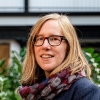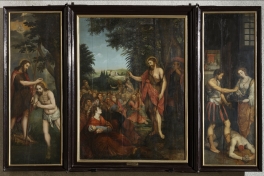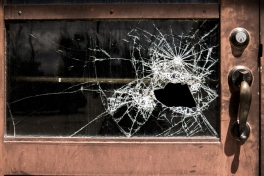Dag 6: Ethnographic collections, aspects of research, preservation and conservation | Summer school
De studenten brachten de hele dag door in het Muziekinstrumentenmuseum in Brussel. Saskia Willaert gaf een introductie over het museum en leidde de studenten rond in het depot. Zij toonde de Afrikacollectie, en gaf meer duiding over de werking van het depot.
Gevraagd naar haar visie op ‘authenticiteit’, vertelde Saskia over een muziekinstrument dat door een bepaalde gemeenschap speciaal gemaakt werd voor het museum, en dat dus niet gemaakt en bespeeld werd voor en door die gemeenschap. Maar toch is dit instrument ‘authentiek’ in die zin dat het op een eerlijke, correct wijze is gemaakt. Saskia vulde bovendien aan dat instrumenten die speciaal worden gemaakt voor de Europese markt soms aangepast worden zodat de klank meer naar onze smaak klinkt.
Na de rondleiding haalde Martijn De Ruijter enkele aspecten aan over het gebruik van ruimte in een depot, klimaatmanagement, de tien schadefactoren en Integrated Pest Management (IPM).
Hierna kregen de studenten het restauratieatelier te zien en de objecten waaraan ze in de namiddag zouden werken. Marieke Verboven, docent Preventieve Conservatie aan de Universiteit van Antwerpen, legde de opdracht uit en lichtte toe wat er allemaal in het conditierapport moet staan.
Na de lunch gingen de studenten aan de slag. Onder begeleiding van Jan Callier werd het object gefotografeerd, waarna de studenten onder supervisie van Joris De Valck (MIM), Farideh Fekrsanati en Lucie Monot hun onderzoek uitvoerden. Deze rapporten zullen samen met de objecten die ze behandelen in de school zelf, gepresenteerd worden op de laatste dag van de Summer School.
English version
The students spent the whole day at the Musical Instruments Museum in Brussels. Saskia Willaert gave an introduction about the museum and introduced the students in the depot. She showed the Africa Collection, and explained more about the storage management.
A student asked what 'authenticity' for Saskia meant. She said that a musical instrument was made especially for the museum by the community, thus not made for the community and played by the community. Yet, this instrument is 'authentic' in the sense that it has been made in a fair, correct way. After that, she replied that sometimes objects especially made for the European market are adapted so that the sound sounds more to the European taste.
After the tour, Martijn took on some aspects, particularly about the use of space in a depot, climate management, the ten damage factors and Integrated Pest Management (IPM).
After that, the students got to see the restoration studio and the objects they would work in the afternoon. Marieke Verboven, lecturer of Preventive Conservation at the University of Antwerp, explained the assignment and what should all be in the conditional report.
After lunch, the students made a picture of the object under the guidance of Jan Callier. After that, they could conduct their research under the supervision of Joris De Valck of MIM, Farideh Fekrsanati, Charles Indekeu and Lucie Monot. These reports will be presented together with the items they treat in the school themselves on the last day of the Summer School.






